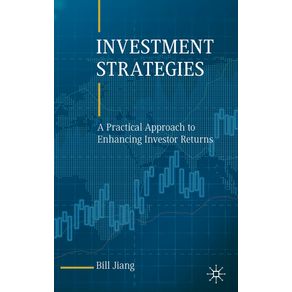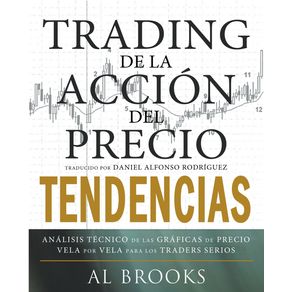| Selo | Dellam Publishing Limited |
|---|---|
| Edição | 0 |
| Idioma | Inglês |
| Autores | Não informado |
| Acabamento | Capa Comum |
| Quantidade de Páginas | 838 |
| Origem | Literatura Estrangeira |
 Finanças para Compras: Domine técnicas e ferramentas para melhores resultados em Suprimentos
Finanças para Compras: Domine técnicas e ferramentas para melhores resultados em Suprimentos
Um Livro
R$ 62,90 à vista O milionário de amanhã começa hoje: Como fazer Fortuna com 300 reais
O milionário de amanhã começa hoje: Como fazer Fortuna com 300 reais
Ases da Literatura
R$ 54,90 à vista Manual do CEO Um verdadeiro MBA para o gestor do século XXI
Manual do CEO Um verdadeiro MBA para o gestor do século XXI
Saraiva
R$ 76,00 à vista Crimes Against Data
Crimes Against Data
Technics Publications
R$ 233,11 ou até 3x sem juros Course Creation Simplified
Course Creation Simplified
Jimmy Naraine
R$ 128,00 ou até 2x sem juros The Almanack of Stanley Druckenmiller
The Almanack of Stanley Druckenmiller
Upgraded Publishing
R$ 154,95 ou até 3x sem juros Stakeholder Engagement Essentials You Always Wanted To Know
Stakeholder Engagement Essentials You Always Wanted To Know
Vibrant Publishers
R$ 327,39 ou até 3x sem juros Treating People Not Patients
Treating People Not Patients
Ethos Collective
R$ 132,26 ou até 2x sem juros Investment Strategies
Investment Strategies
Springer Nature B.V.
R$ 345,19 ou até 3x sem juros Leading with Strategic Thinking
Leading with Strategic Thinking
John Wiley & Sons
R$ 167,41 ou até 3x sem juros Organizar para a Complexidade. Como fazer o trabalho funcionar de novo, para criar organizações de alto desempenho
Organizar para a Complexidade. Como fazer o trabalho funcionar de novo, para criar organizações de alto desempenho
Follett Publishing
R$ 121,78 ou até 2x sem juros Present and Past Banking in Mexico
Present and Past Banking in Mexico
Legare Street Press
R$ 249,59 ou até 3x sem juros The Future of Purpose-Driven Branding
The Future of Purpose-Driven Branding
Morgan James LLC (IPS)
R$ 126,58 ou até 2x sem juros Dressing Modern Frenchwomen
Dressing Modern Frenchwomen
Hopkins Fulfillment Service
R$ 481,71 ou até 3x sem juros Super Mentors
Super Mentors
Manuscripts LLC
R$ 119,54 ou até 2x sem juros Dinheiro não é o problema, você é (Portuguese)
Dinheiro não é o problema, você é (Portuguese)
Access Consciousness Publishing Company
R$ 105,41 ou até 2x sem juros Como não ser uma vendida (Livro com brinde) (2005)
Como não ser uma vendida (Livro com brinde) (2005)
BUZZ EDITORA
R$ 59,90 à vista Hypothesis-Driven Development
Hypothesis-Driven Development
Cook & McDouglas
R$ 198,69 ou até 3x sem juros The Almanack of Stanley Druckenmiller
The Almanack of Stanley Druckenmiller
Upgraded Publishing
R$ 154,95 ou até 3x sem juros Debating Innovation
Debating Innovation
Springer Nature B.V.
R$ 341,37 ou até 3x sem juros Disrupt Disruption
Disrupt Disruption
New Degree Press
R$ 123,13 ou até 2x sem juros Treating People Not Patients
Treating People Not Patients
Ethos Collective
R$ 132,26 ou até 2x sem juros Investment Strategies
Investment Strategies
Springer Nature B.V.
R$ 345,19 ou até 3x sem juros Present and Past Banking in Mexico
Present and Past Banking in Mexico
Legare Street Press
R$ 249,59 ou até 3x sem juros Project Management in the Hybrid Workplace
Project Management in the Hybrid Workplace
Racket Publishing
R$ 141,51 ou até 2x sem juros A Espiritualidade na Angariação de Fundos
A Espiritualidade na Angariação de Fundos
GNP Global Nazarene Publications
R$ 70,35 à vista Trading de la Acción del Precio Tendencias
Trading de la Acción del Precio Tendencias
Draft2Digital
R$ 416,85 ou até 3x sem juros Changing the Game
Changing the Game
Greenleaf Book Group
R$ 122,70 ou até 2x sem juros Super Mentors
Super Mentors
Manuscripts LLC
R$ 119,54 ou até 2x sem juros The Work Before the Work
The Work Before the Work
Box of Tricks Publishing
R$ 155,18 ou até 3x sem juros Smart Money Concept
Smart Money Concept
Marcus Blackwell
R$ 140,53 ou até 2x sem juros Crimes Against Data
Crimes Against Data
Technics Publications
R$ 233,11 ou até 3x sem juros Winning the Week
Winning the Week
Houndstooth Press
R$ 125,20 ou até 2x sem juros The Almanack of Stanley Druckenmiller
The Almanack of Stanley Druckenmiller
Upgraded Publishing
R$ 154,95 ou até 3x sem juros Disrupt Disruption
Disrupt Disruption
New Degree Press
R$ 123,13 ou até 2x sem juros Five Brain Leadership
Five Brain Leadership
Page Two Press
R$ 167,42 ou até 3x sem juros Investment Strategies
Investment Strategies
Springer Nature B.V.
R$ 345,19 ou até 3x sem juros Leading with Strategic Thinking
Leading with Strategic Thinking
John Wiley & Sons
R$ 167,41 ou até 3x sem juros Value, Historicity, and Economic Epistemology
Value, Historicity, and Economic Epistemology
Springer Nature B.V.
R$ 346,52 ou até 3x sem juros The Future of Purpose-Driven Branding
The Future of Purpose-Driven Branding
Morgan James LLC (IPS)
R$ 126,58 ou até 2x sem juros Trading de la Acción del Precio Tendencias
Trading de la Acción del Precio Tendencias
Draft2Digital
R$ 416,85 ou até 3x sem juros Dressing Modern Frenchwomen
Dressing Modern Frenchwomen
Hopkins Fulfillment Service
R$ 481,71 ou até 3x sem juros Stuck? Diagrams Help.
Stuck? Diagrams Help.
Lulu Press
R$ 275,64 ou até 3x sem juros Super Mentors
Super Mentors
Manuscripts LLC
R$ 119,54 ou até 2x sem juros The Work Before the Work
The Work Before the Work
Box of Tricks Publishing
R$ 155,18 ou até 3x sem juros